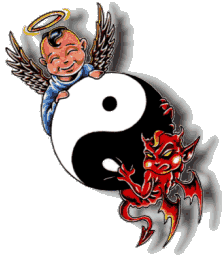
Coca-Cola has been operating in Japan since 1957. It operates a franchise system with 12 bottling partners. The company sells more than 30 brands and more than 850 products a year through some 1.15 million retail outlets and nearly 1 million vending machines. Brands include Coca-Cola, Fanta, Minute Maid, Georgia canned coffee, Sokenbicha blended tea, Aquarius sports drink, I LOHAS mineral water, Goonew yogurt drink, Glaceau vitamin water and many, many more.
Japan Today editor Chris Betros visits Sayre(Coca-Cola Japan President) to hear more about Coca-Cola in Japan.
How come every time a flavor I like comes on the market, it’s gone after a few months?
Retailers and convenience stores expect new products. The competition for shelf space is fierce. We have more competitors here for tea, coffee, sports drinks and water than in any other market. However, drinks tend to stay a bit longer in vending machines.
Your business seems to thrive on new products.
We are always testing products and packaging innovations. It’s one of the ways in which we differentiate ourselves. Our brand managers are relentless. They never stop changing flavors. Sometimes, we’ll release a new product every week; other products will be seasonal. For example, for winter we have a new Fanta snow squash strawberry drink in a ball-shaped bottle, and we have just introduced some soups for vending machines.
How much autonomy do you get from head office in terms of product introduction?
About 70-80% of time, we get a lot of autonomy, which is more so than a lot of other multinational companies. But the other 20-30%, particularly on Coca-Cola, there are very firm parameters. Most of the flexibility we get is on flavors and bottle shapes because there is a strong mandate for us to be locally relevant.
What are your best-selling drinks?
There are six drinks, which each sell more than 100 billion yen a year. They are Coca-Cola, Coke Zero, Fanta, Georgia canned coffee, Sokenbicha (blended tea) and Aquarius. Japan is one of the top five markets in the world for us.
How come some flavors differ slightly from country to country? For example, Fanta orange in Japan is not quite as orange as in other countries.
First, let me say that Coke is Coke, wherever you go. But some flavors like Fanta do differ. In Germany and Latin America, for example, the color is much more orange. We tested that here and it came across as too artificial. The Fanta orange in Japan has no preservatives, no artificial colors, and that is why it is a softer color.
Speaking of Coke Zero, why isn’t Diet Coke more popular in Japan?
Our bottlers said that Diet Coke would not be a big seller. We have to respond to consumers and Japanese consumers have embraced Coke Zero instead. For example, McDonald’s – which is one of our single largest customers – was our first customer to convert all of their outlets to Coke Zero last year.
What are some unique characteristics of the Japanese market?
The frequency with which we launch new products is much higher in Japan. It can be every week. What we have got better at is managing the life cycle of products in terms of right level of demand and production. One of the challenges is that some of our competitors—and ourselves—in the past have had a tendency to get to a number with a convenience store or supermarket operator and then flood the market with it. Well, after a drink peaks, what do you do?
What frustrates you about doing business in Japan?
In Japan, there is still a strong need for consensus and I would suggest that consensus does not necessarily focus on the consumer. The consumer here is relentless, they know value, what they want and are extremely intent on getting more value. Some of the key business leaders haven’t woken up to that. I still think that in some regards, Japan is still too producer-focused on what is right for the business. Japan is undergoing a huge transformation on the consumer side and the government is slow to react while the consumer moves on.
read more questions @ source!!
source: JAPANTODAY; japan_now


1 comment:
These mycelial Candida cellular structure flourish, feed and excrete substances that are highly toxic for the immune system.
Take a look at my weblog: Candida Infektion
Post a Comment